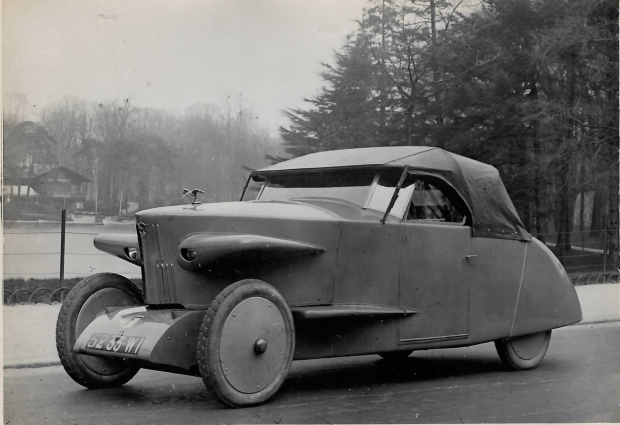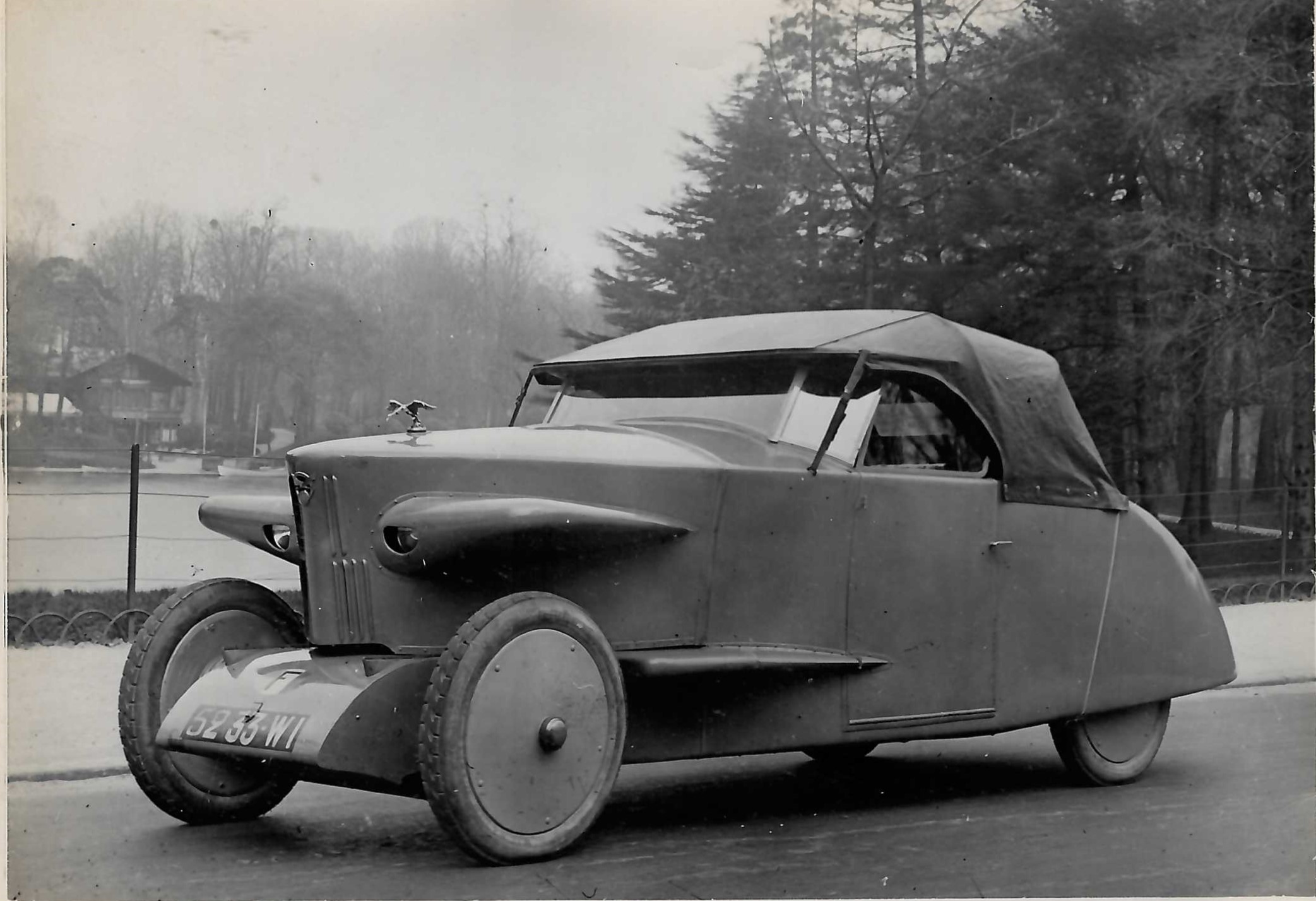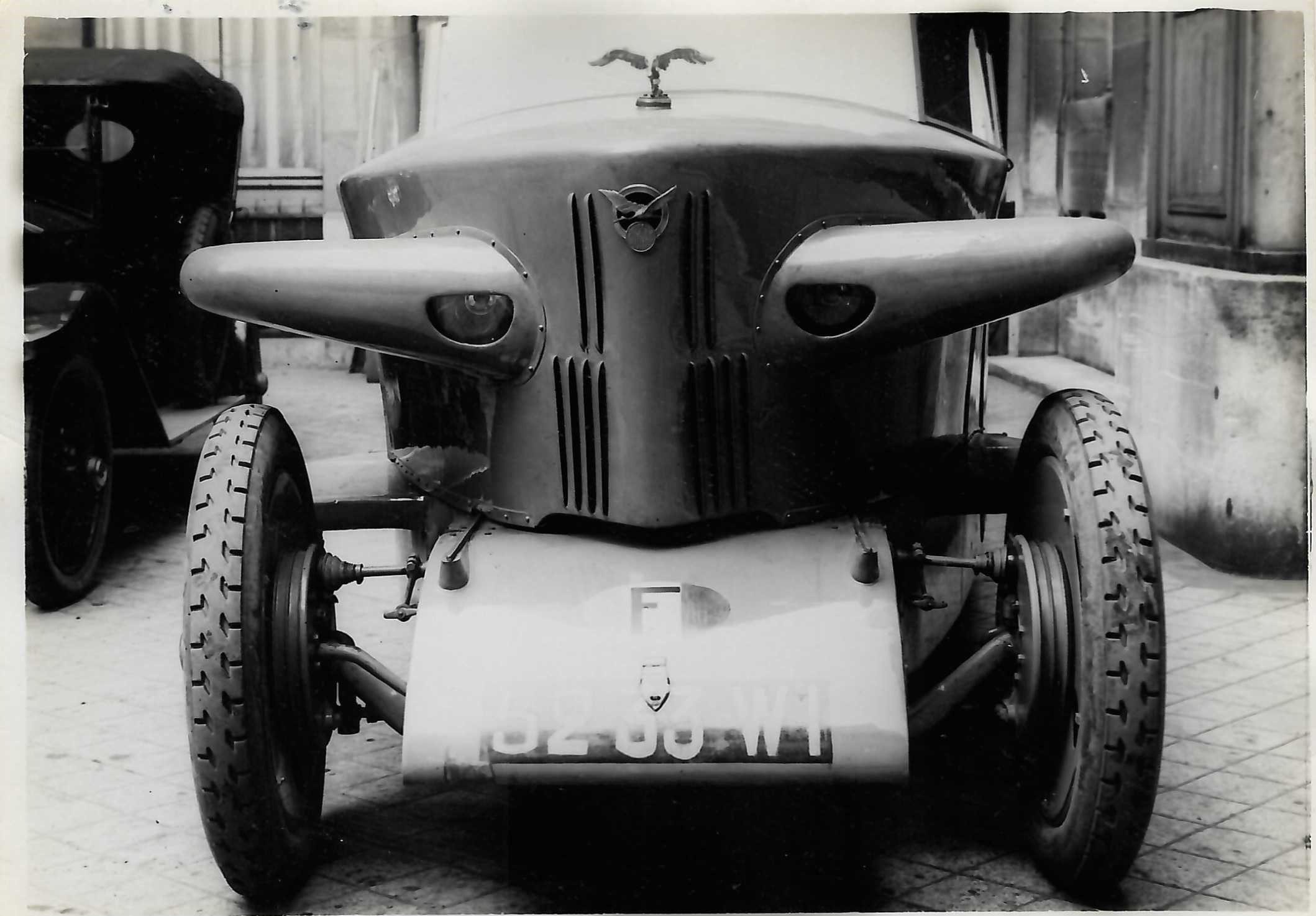Greg O’s Garage; A New Series From the Helck Family Collection: Strange and Unusual Cars #1: 1925 Forostovsky-Bignan

Years later after Howard Kroplick received the Helck Family Collection, we are still finding surprising items deep in the files.
This time, we've come across a small box titled 'W.F. Bradley' containing about a dozen and a half photos of some of the most unusual cars ever seen. Starting in 1903, the year of the ill-fated Paris-Madrid race, W. F. Bradley began his career as a talented automotive journalist. He not only followed the Gordon Bennett Cup races and the French Grands Prix, but went to America to take part in the Glidden Tours, the first long distance reliability trials held in the USA. He also saw the start of the amazing New York-Paris Race and the beginnings of American track racing on Long Island and at Indianapolis. There is no doubt that a preeminent automotive painter and historian such as Helck would know of a journalist with the stature of Bradley.
I am slowly beginning to uncover what some of these unique automobiles are, but information on most of the autos is very difficult to ascertain due to their rarity and uniqueness. Here's the first of quite a few...
Greg O.

First up in this Helck series is this odd-looking auto in a photo from 1928.
Upon research, it was uncovered that this was a creation of Paul Forostovsky Jr.
Forostovsky was a Russian born coachbuilder with a few U.S. Patents under his belt. His October 1925 patent, #1556778 for aerodynamic automotive design, bore this car.

The car started as a French-built Bignan. In 1922, Bignan introduced the 11CV and it is believed Forostovsky utilized the 11CV as his chassis. The 11CV had a 2 liter, 50hp heart under the hood considered to be fast and reliable. Front and rear servo assisted brakes and a 4-speed gearbox were fairly modern for their day and two 70hp models were constructed for competition.
Forostovsky took this car and gave it his aerodynamic treatment. An enclosed interior with a convertible top, the main design element was the 4 'wings' on the front in place of the fenders. These small airplane wings integrated headlights which for the time, was very futuristic. The reason for these wings? Forostovsky surmised that wings, instead of traditional fenders would keep the car free of dirt, but create little, to no wind resistance as fenders of the day would have. As with their use on airplanes, wings do often create lift, but it is unknown if there was any lift on the vehicle due to the unusual wings.
History's limited information of Forostovsky and this vehicle tells me the endeavor was not popular for whatever reason. Controversial looks or performance, you be the judge.
The rest of the photos in the Bradley photo box are just as interesting, as their histories become discovered, I will bring them to VanderbiltCupraces.com.

Comments
There is no accounting for taste. Forostovsky misunderstood both the function of fenders and aerodynamics, not to mention aesthetics. This misunderstanding is recurrent, witness the blob in the breeze treatments of the late thirties and their resurgence with the aid and abetttment of Jack Telnack at the Ford school of colon flow styling in the 1990s.
Could be Aero inspired like the Voisin.
The idea of the side “wings” could have been taken from the 1924 Sport version of the German Grand Prix “Tropfenwagen” RH Benz of 1924 (see photo). The car was built for the 1923 Italian Grand Prix and was unusual due to the rear (middle) engine and the aerodynamic shape. Aerodynamics as was known at the time.
The “wings” on the Forostvosky car don’t provide any downforce effect even though they have an inverted wing profile.
Looking forward to seeing more articles about this collection!
Aldo-
Look for the next post in the series. It will detail the 1920’s Rumpler Tropfenwagen.
Tropfenwagen in German translates to Teardrop Car.